In mid-April Shae’s mom and stepdad came to visit us for a week in Arizona. They wanted to visit Sedona, so we booked a great Airbnb in Prescott Valley so we could explore the local area.
One of the places we all wanted to check out was Montezuma Castle National Monument, so we stopped there on our way to do the hike up to Cathedral Rock.
Unlike a lot of sites run by the National Park Service, the visitor center at this National Monument was still open despite COVID, although there were capacity restrictions in terms of how many people were allowed inside at one time and masks were required inside at the time.
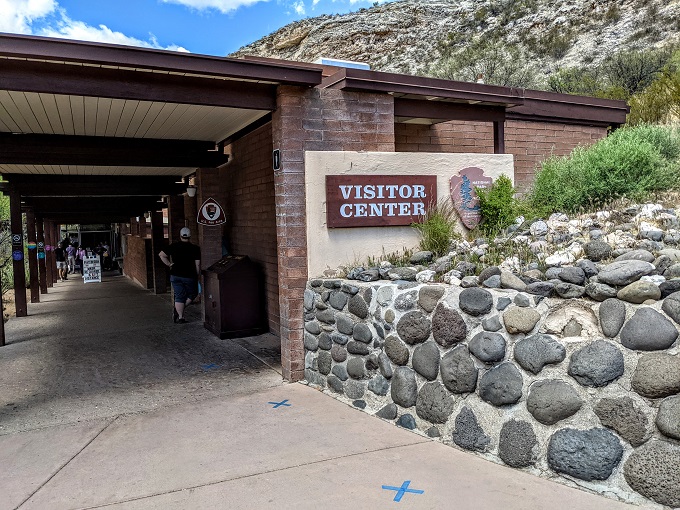
It’s only a short walk from the visitor center along a paved path before you see Montezuma Castle built into the limestone cliff, with information boards about the site all along the way.
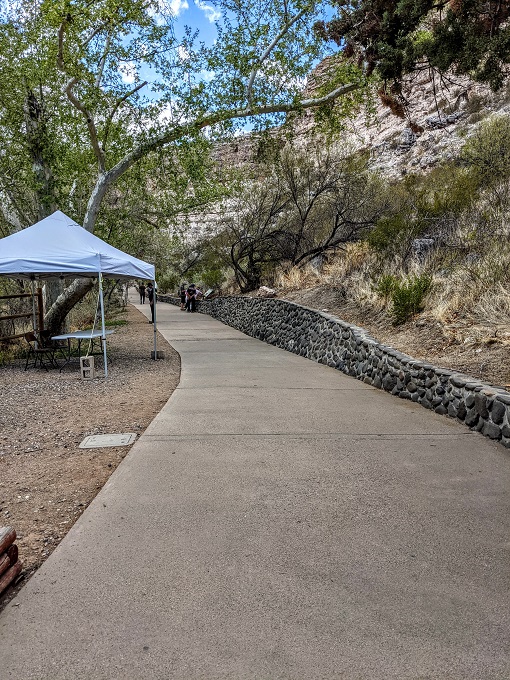
The name Montezuma Castle is a misnomer because it wasn’t a castle, nor was it associated with Emperor Motecuhzoma II (aka Montezuma). The confusion with its name came about in a similar way to how Aztec Ruins National Monument in New Mexico was named.
European settlers thought that the building resembled a castle and that Emperor Motecuhzoma II had been involved in its construction despite it being built long before he was alive. It’s thought that Emperor Motecuhzoma II reigned in the early 1500s, whereas construction on Montezuma Castle is thought to have been started by the Sinagua people circa 1100 and continued through to the early 1400s.
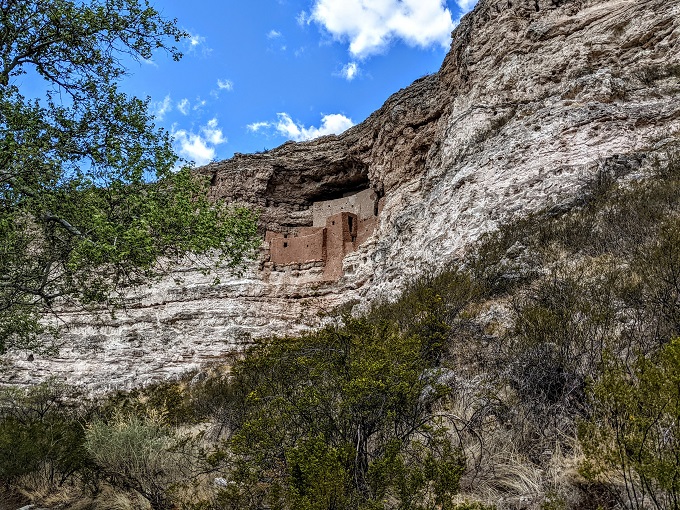
Rather than being a castle, it was simply a multi-story home which housed about 35 people. That was just a small part of the community that lived in the area though because when taking into account other nearby pueblos, shelters and another “castle”, about 150-200 people lived in the area.
Montezuma Castle itself was constructed using limestone and river cobbles that were held together by mud mortar. The builders then used mud plaster to cover and seal the walls of the building. The plastering was quite literally done by hand because hand prints can still be seen in the exterior’s plaster from where it was patted on.

Montezuma Castle became a popular location for visitors in the late 1800s. Due to concerns about the impact of visitors on the site, some citizens lobbied to have it be designated a National Monument. Their efforts were successful, so on December 8, 1906 President Theodore Roosevelt declared it a National Monument.
Unfortunately some of the damage was done by that point because visitors had looted most of the artefacts that the dwellings’ residents had left behind. Tours through the building itself continued until October 1, 1951, with visitors accessing the dwellings by a series of ladders.
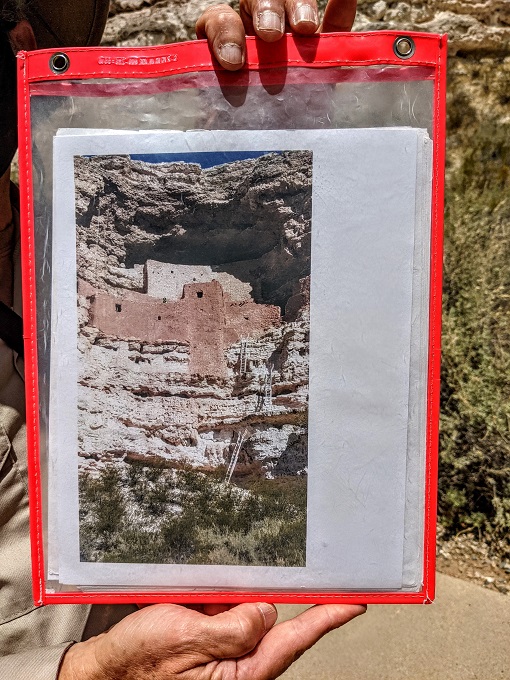
The building had 5 levels and 20 rooms, with each clan having their own room. The other rooms were used for rituals, storage, workspace and more.
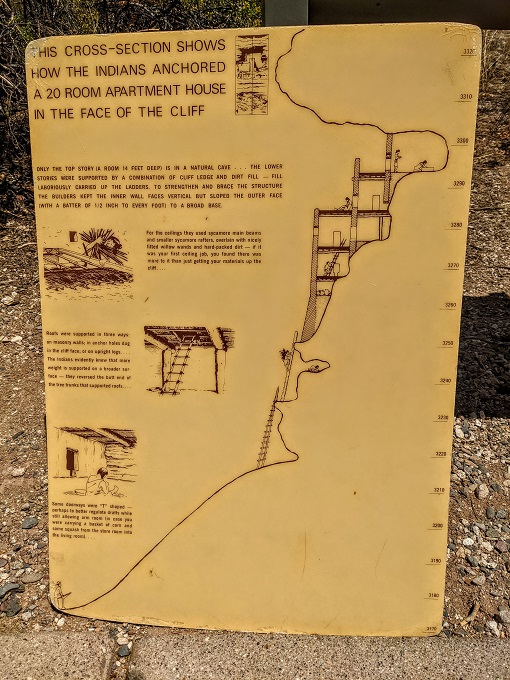
Seeing as tours through Montezuma Castle ended in 1951, you’re now only able to admire the buildings from a distance.

That’s not the only remains of a “castle” on site. As you continue along the paved path, you’ll see signs for what’s known as Castle A. Castle A contained approximately 45 rooms that were also spread out over several stories.
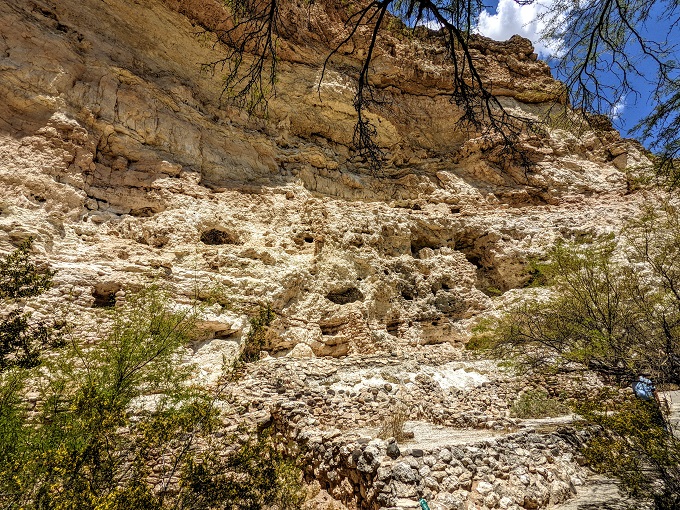
One of the information boards had a helpful photo showing the layout of Castle A, including where each of its levels would’ve been built.
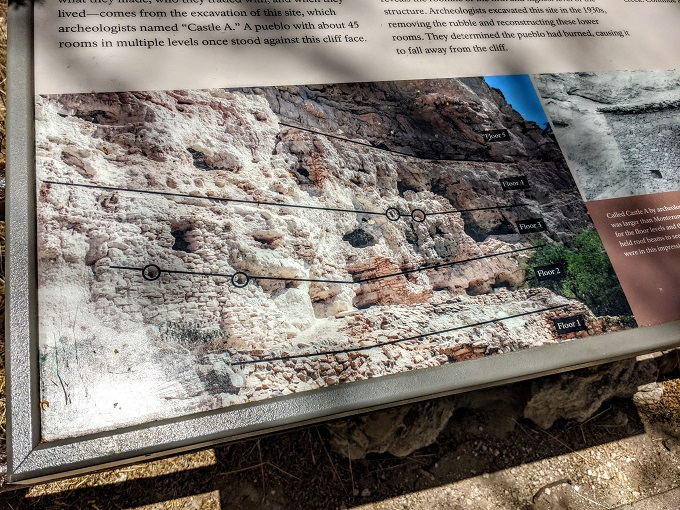
One of the reasons why so many people settled here for centuries is because there was a good water source in the form of Beaver Creek. In addition to using the water to irrigate their fields, Beaver Creek served as a water source for wildlife which the Sinagua people were then able to hunt.
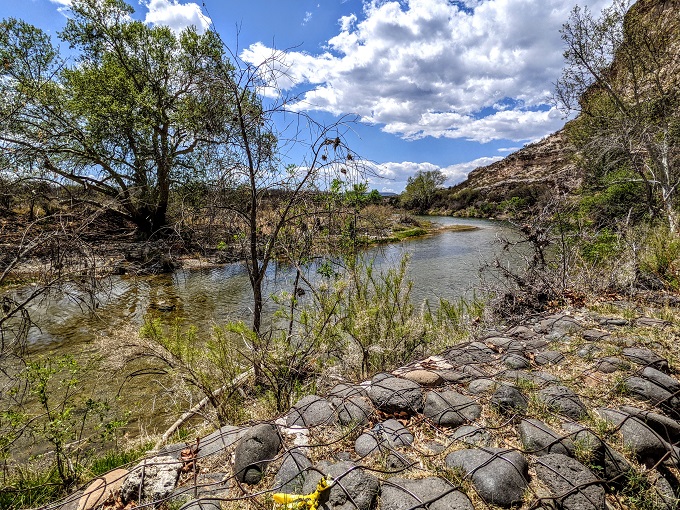
The trail loops back to the visitor center, with a diorama along the way showing what life might have looked like inside Montezuma Castle ~700 years ago.
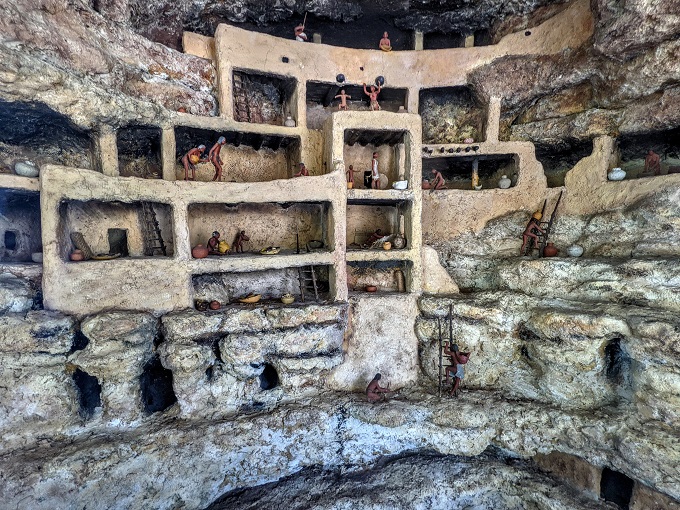
How Long Does It Take To Visit Montezuma Castle National Monument?
Due to the fact that you can only view the dwellings from a distance, a trip to Montezuma Castle National Monument doesn’t take as long as visiting a site like Chaco Culture National Historical Park or Aztec Ruins National Monument (both in New Mexico) where you’re able to examine the ruins in more closer proximity.
We spent just over half an hour there, although some might prefer to take a little more time to look around. I don’t think you need much more than an hour to visit this particular site, although Montezuma Well is somewhat nearby and is also worth a visit.
Is Montezuma Castle National Monument Pet-Friendly?
Yes, Montezuma Castle is pet-friendly because the paved trail doesn’t take you through the dwellings. That meant Truffles got to join us on our way round the site.
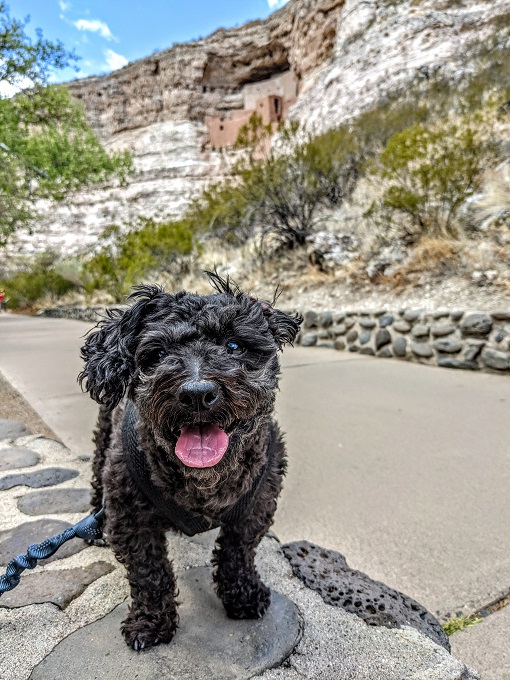
How Much Does It Cost To Visit?
The entry fee for Montezuma Castle National Monument is $10 per person for everyone ages 16+, with entry being free for anyone ages 15 and under. That $10 fee is a seven day pass and also includes entrance to Tuzigoot National Monument.
Seeing as it’s a National Monument and is run by the National Park Service, entry is free if you have a National Parks pass. That’s valid for up to four people which was perfect for us because we have an annual pass and there were four of us in our group, meaning we didn’t have to pay anything extra to visit.
Where Is Montezuma Castle National Monument?
Montezuma Castle National Monument is in central Arizona. It’s about 90 minutes north of Phoenix, 35 minutes south of Sedona and just under an hour south of Flagstaff. It’s only 2.5 miles from exit 289 on I-17, so it can be a great place to stop and stretch your legs when heading north or south along I-17.
[…] spending some time at Montezuma Castle National Monument, we headed on to Montezuma Well – an outlier site of Montezuma Castle which is about 20 […]